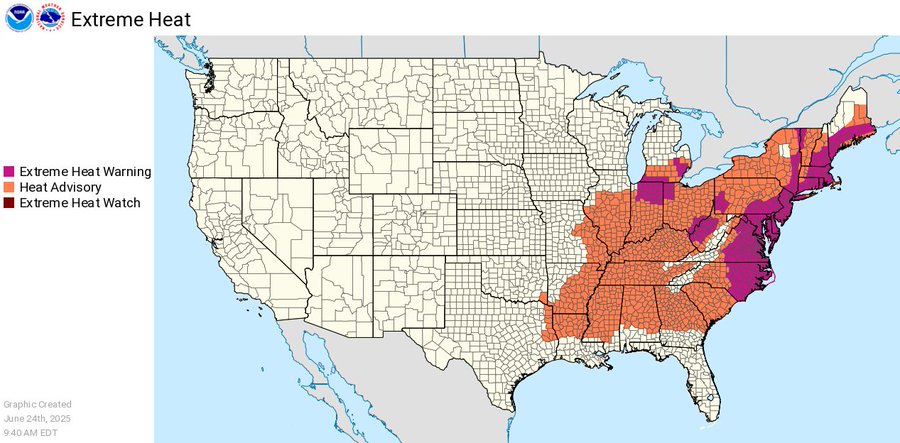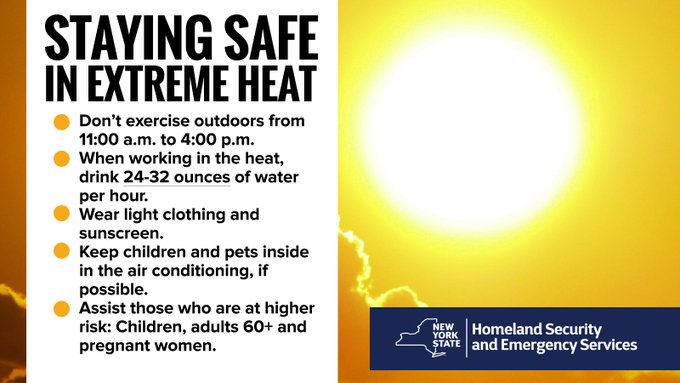As temperatures soar to record-breaking levels, an extreme heat warning has been issued across multiple regions. This heatwave poses significant health risks, making it critical to take precautions. In this article, we’ll explore the dangers of extreme heat, safety tips, and how to protect yourself and your loved ones during this intense weather event.

Understanding the Extreme Heat Warning
An extreme heat warning is issued when temperatures or heat indices are expected to reach dangerously high levels, typically above 90°F (32°C) with high humidity, lasting for two or more days. According to the National Weather Service, these conditions can lead to heat-related illnesses like heat exhaustion and heatstroke, particularly for vulnerable populations such as the elderly, children, and those with chronic illnesses.
Why This Heatwave Is Concerning
- Record-Breaking Temperatures: Some areas are experiencing temperatures 10-15°F above average.
- High Heat Index: Humidity levels make it feel even hotter, increasing the risk of heat-related illnesses.
- Prolonged Duration: The heatwave is expected to last several days, amplifying its impact.

Health Risks of Extreme Heat
Exposure to extreme heat can lead to serious health issues, including:
- Heat Exhaustion: Symptoms include heavy sweating, weakness, nausea, and dizziness.
- Heatstroke: A life-threatening condition with symptoms like high body temperature (above 103°F), confusion, and loss of consciousness.
- Dehydration: Prolonged heat exposure can deplete body fluids, leading to severe complications.
Safety Tips to Beat the Heat
To stay safe during this extreme heat warning, follow these essential tips:
- Stay Hydrated
- Drink plenty of water throughout the day, even if you don’t feel thirsty.
- Avoid sugary drinks, caffeine, and alcohol, as they can dehydrate you.
- Stay Indoors During Peak Heat
- Limit outdoor activities between 10 a.m. and 4 p.m., when temperatures are highest.
- Use air conditioning or visit public cooling centers if your home lacks adequate cooling.
- Wear Appropriate Clothing
- Opt for lightweight, loose-fitting, and light-colored clothing to stay cool.
- Use a wide-brimmed hat or umbrella for shade when outdoors.
- Check on Vulnerable Individuals
- Regularly check on elderly neighbors, children, and pets to ensure they’re safe and cool.
- Never leave anyone in a parked car, as temperatures inside can rise rapidly.
- Recognize Warning Signs
- Be aware of symptoms of heat exhaustion or heatstroke.
- Seek immediate medical attention if someone shows signs of confusion, fainting, or high fever.
Community Resources and Cooling Centers
Many local governments have opened cooling centers to provide relief during the heatwave. Check your local government website or call 211 to find the nearest cooling center. Libraries, community centers, and shopping malls are often designated as safe spaces to cool off.
Preparing for Future Heatwaves
As climate change increases the frequency and intensity of heatwaves, preparation is key:
- Install Air Conditioning: If possible, invest in energy-efficient cooling systems.
- Insulate Your Home: Use window shades or reflective materials to keep heat out.
- Stay Informed: Sign up for weather alerts to receive real-time updates on extreme heat warnings.
Conclusion
The current extreme heat warning is a reminder to prioritize safety and preparedness. By staying hydrated, avoiding peak heat hours, and looking out for vulnerable individuals, you can reduce the risks associated with this heatwave. Stay cool, stay safe, and share these tips to help your community weather the heat.
For the latest updates on the heatwave, visit the National Weather Service or follow local news outlets.
